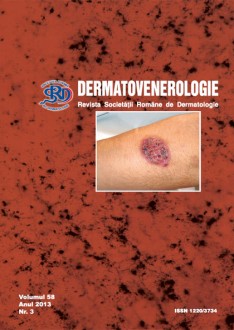Introduction: Plasma cell cheilitis is a rare chronic inflammatory disease of the lips characterized histologically
by the presence of abundant plasma cell infiltrate in the upper dermis. It is considered homologous with plasma cell
balanitis of Zoon. Clinically it presents as circumscribed, erosive, erythematous plaques located on the lips.
Clinical case: We present the case of a 61 years old woman who presented 4 years like pain, slightly edematous
and erosive plaques located on the lips, resistant to previously topical treatment with nystatin, fucidinic acid, and acyclovir. Histological examination revealed the presence of an infiltrate consisting of numerous plasma cells located in the upper dermis. Based on histopathological examination the diagnosis of plasma cell cheilitis was made.
Treatment was carried out with clobetasol propionate cream twice daily application for 30 days with healing of lesions, followed by twice a week applications for two-month with no relapses at 12 months after the end of treatment.
Discussion: Although usually plasma cell cheilitis is located only on the lips there is the possibility of extending
to the oral mucosa, tongue, palate, epiglottis and larynx. Plasma cell cheilitis should be differentiated from allergic or
irritant contact cheilitis, candidal and bacterial cheilitis, syphilis, actinic cheilitis, granulomatous cheilitis, facticial
cheilitis, oral lichen planus, extramedullary plasmacytoma, squamous cell carcinoma. Although, lesions may rarely
spontaneously regress, treatments such as topical or intralesional corticosteroids, topicals with 0.1% tacrolimus
or cyclosporine may lead to healing of lesions.
Conclusion: Plasma cell cheilitis should be considered in the differential diagnosis of inflammatory diseases of the
lips, the typical histological appearance confirming the diagnosis.


